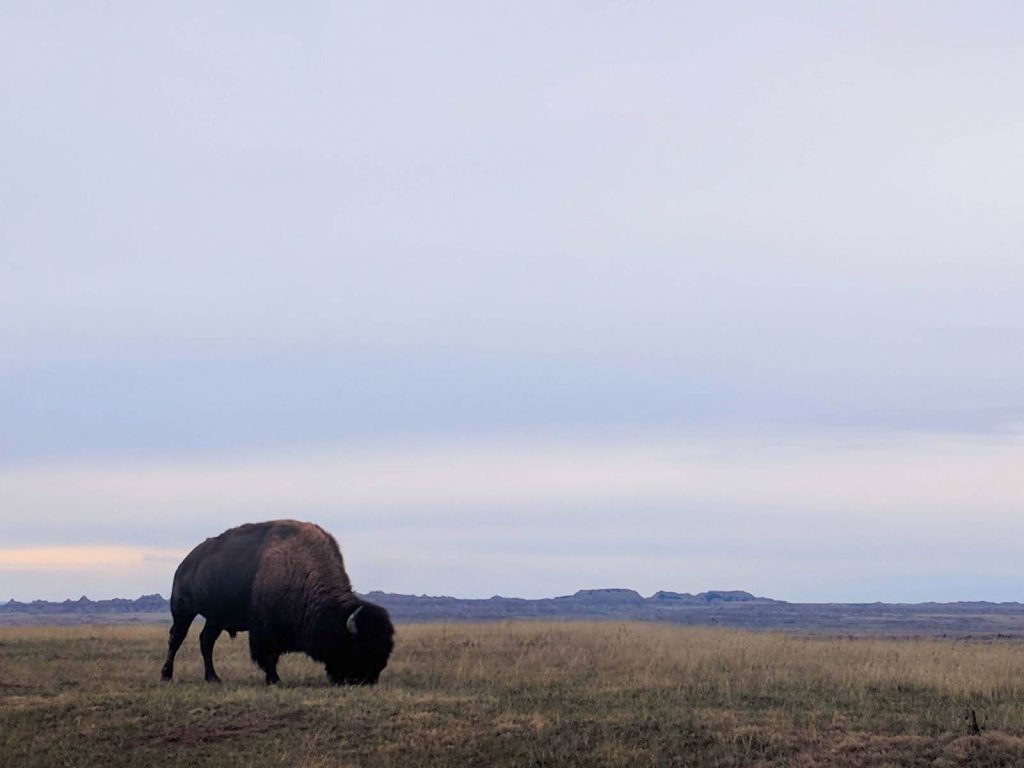by Kate Stone, ’19 LL.M.
On Saturday, 3 November, Rachael Jones and I (both ‘19 LLM) left New York city with four other members of the Native American Law Students’ Association (NALSA) to conduct non-partisan poll observations in South Dakota and to protect the voting rights of Native Americans in last week’s midterm elections.
NALSA has partnered with Four Directions and Native Vote for many years now to empower the Native American community through greater participation in the electoral process. This year we were also joined by two students from Yale Law School and a Columbia Alumnus, Frank Holleman, ’12 CLS . Another alumnus, Greg Lembrich, ’03 CLS , who has worked with and alongside Four Directions and Native Vote from the beginning of NALSA’s involvement, supported our team and took an entire day out of his hectic pre-midterm schedule to acquaint us with our polling stations on the Rosebud Sioux and Pine Ridge Reservations and their surrounds.

Our role as non-partisan poll observers was to make sure that all voters, but particularly Native American voters, were not prevented from voting when and where they were lawfully entitled to vote. We had to make sure election officials working at polling stations (who are usually local people brought in to work at the polls) knew what the law was and were applying it correctly as voters came in to vote. This involved, for example, ensuring that voters who came in without ID were enabled to fill out an affidavit to confirm their identity and then allowed to vote, or contacting the County Auditor to verify an elector’s registration if they didn’t appear on the list at the polling station.
The teams had mixed experiences at our respective polling stations, and a troubling trend emerged of voters who had recently registered to vote not making it onto the register and being forced to cast provisional ballots.

Nevertheless, Greg ran some of the numbers after election day and the numbers show that Native voters in South Dakota came out in force, with many of the highest increases in turn-out from the 2016 presidential elections being registered on reservations.

We also managed to fit in some sight-seeing around the Great Plains as we drove from Rapid City, South Dakota down to the Nebraska border for election day, including the snow-clad Black Hills National Forest, Crazy Horse Memorial, Mt. Rushmore, the site of the Massacre at Wounded Knee and the astounding Badlands National Park.

Many thanks to Greg, Agatha Erickson and Juliana Bennington for all the hard work organizing the trip. Thanks also to SJI for providing financial support for the trip. Ngā mihi nui ki a koutou! (An acknowledgement to you all in te reo Māori – the indigenous language of New Zealand.)

Kate Stone is an LL.M. student from New Zealand. She is a 2018-2019 LL.M. Human Rights Fellow.